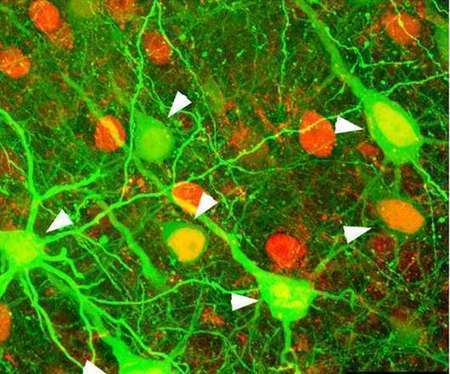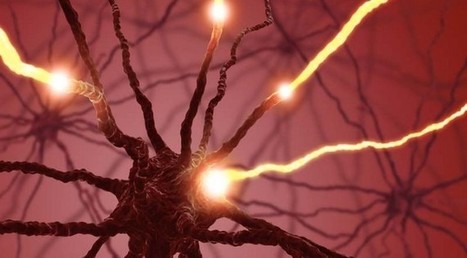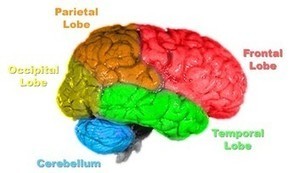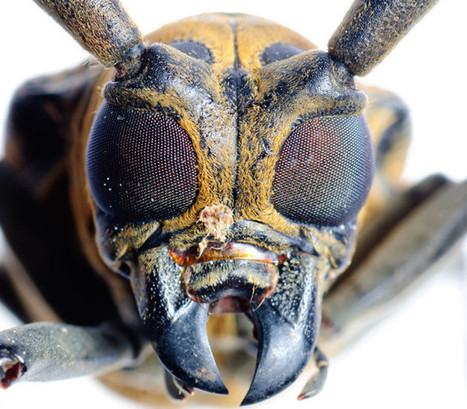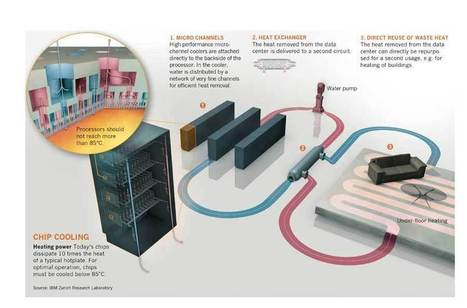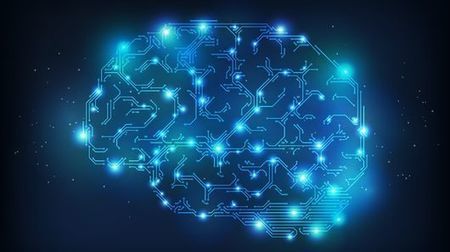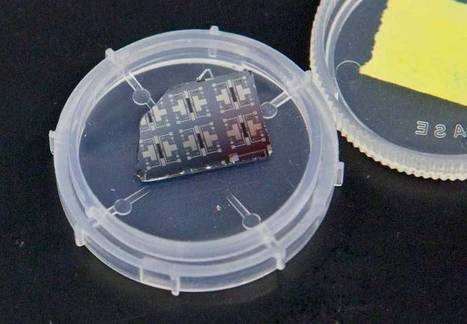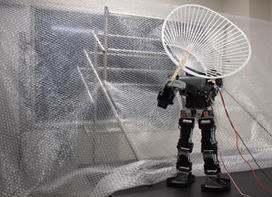 Your new post is loading...
 Your new post is loading...
Computer engineers study the mathematics of how to optimize complex systems. In one example, they face a logistics challenge known as the "travelling salesman problem:" how can a hypothetical salesperson visit every city on their route in the shortest distance? The algorithms developed to answer these sorts of questions are useful in many situations, such as reducing the costs of and pollution from a fleet of delivery trucks. But when engineers tried to optimize traffic on the internet, they found their methods wanting. [...] Honeybees don't study mathematics, but the demands of evolution reward those colonies that succeed in optimizing their resources. Fortunately, in the strange tale of how honeybees make the internet work, the scientists were smart enough to see that the honeybees knew better than they did.
"A brain-inspired computing component provides the most faithful emulation yet of connections among neurons in the human brain, researchers say. The so-called memristor, an electrical component whose resistance relies on how much charge has passed through it in the past, mimics the way calcium ions behave at the junction between two neurons in the human brain, the study said. That junction is known as a synapse. The researchers said the new device could lead to significant advances in brain-inspired—or neuromorphic—computers, which could be much better at perceptual and learning tasks than traditional computers, as well as far more energy efficient."
"Carnegie Mellon University is embarking on a five-year, $12 million research effort to reverse-engineer the brain, seeking to unlock the secrets of neural circuitry and the brain's learning methods. Researchers will use these insights to make computers think more like humans."
A new paper discusses the efficiency of neuronal computing and the ways in which we might better model the brain's function in future hardware. In some significant ways, we're clearly on the right track already.
"Stanford bioengineers have developed faster, more energy-efficient microchips based on the human brain – 9,000 times faster and using significantly less power than a typical PC. This offers greater possibilities for advances in robotics and a new way of understanding the brain. For instance, a chip as fast and efficient as the human brain could drive prosthetic limbs with the speed and complexity of our own actions."
Brains are the most powerful computers known. Now microchips built to mimic insects' nervous systems have been shown to successfully tackle technical computing problems like object recognition and data mining, researchers say.
"If you think about it, the human brain is a magical thing. It's capable of computing complicated algorithms on only 20 watts of energy, making it a computationally powerful and compact natural creation that is 10,000 times more dense and efficient than a computer. That natural efficiency has inspired IBM to create a computer fueled on liquid energy, or "electronic blood" that has the ability to carry power in and take heat out — much like the human circulatory system already does."
"Inspired by nothing less than the human brain, IBM announced today a new "software ecosystem" that is designed for programming silicon chips that have a dramatically different architecture. The breakthrough technology, the company stated in a press release, could enable “a new generation of intelligent sensor networks that mimic the brain’s abilities for perception, action, and cognition."
"A computer scientist is using biomimicry to build a computer at University College London that selfcorrects operations the same way the body does in neural networks and DNA."
A cat can recognize a face faster and more efficiently than a supercomputer. That's one reason a feline brain is the model for a biologically-inspired computer project.
|
"Our data-driven society is churning out more information than traditional storage technology can handle, so scientists are looking for a solution in Nature's hard drive: DNA. A pair of researchers at Columbia University and the New York Genome Center recently wrote a full computer operating system, an 1895 French film, an Amazon gift card and other files into DNA strands and retrieved them without errors, according to a study published in the latest edition of Science."
"IBM scientists have created randomly spiking neurons using phase-change materials to store and process data. This demonstration marks a significant step forward in the development of energy-efficient, ultra-dense integrated neuromorphic technologies for applications in cognitive computing. Inspired by the way the biological brain functions, scientists have theorized for decades that it should be possible to imitate the versatile computational capabilities of large populations of neurons. However, doing so at densities and with a power budget that would be comparable to those seen in biology has been a significant challenge, until now."
"Using a matrix of nano-sized memristors, researchers working at the Royal Melbourne Institute of Technology (RMIT) and the University of California, Santa Barbara claim to have constructed the world’s first electronic memory cell that effectively mimics the analog process of the human brain. By storing memories as multiple threads of varying information, rather than a collection of ones and zeroes, scientists believe that this device may prove to be the first step towards creating a completely artificial, bionic brain. Working at the MicroNano Research Facility of RMIT, the researchers believe that the breakthrough not only carries them closer to reproducing key aspects of the human brain electronically, but could also one day assist in providing effective treatments for neurological conditions – such as Alzheimer’s and Parkinson’s diseases – by studying such diseases outside the body using artificial brains. Eventually, even cybernetic implants could conceivably be developed from this technology."
Mechanical engineers at the Babol University of Technology in Mazandaran, Iran, have turned to nature to devise an algorithm based on the survival trials faced by salmon swimming upstream to the spawning grounds to help them fish out the optimal solution to a given problem.
"What is your current computer made of? Aluminum? Silicon? Plastic? Perhaps the slime mold Physarum polycephalum? If that last one isn’t true for you now, there’s a chance it will be in the future. Andrew Adamatzky from the University of the West of England and Theresa Schubert of Bauhaus-University Weimar have published a paper in the journal Materials Today which describes how they were able to use the slime mold to create a logical circuit."
"Materials scientists at the Harvard School of Engineering and Applied Sciences (SEAS) have created a new type of transistor that mimics the behavior of a synapse. The synaptic transistor simultaneously modulates the flow of information in a circuit and physically adapts to changing signals. The technology could lead to creation of a new kind of artificial intelligence which is embedded in the very architecture of a computer rather than software."
"The world’s largest smartphone chipmaker, Qualcomm, says it is ready to start helping partners manufacture a radically different kind of a chip—one that mimics the neural structures and processing methods found in the brain."
"The human cerebellum is a mysterious thing. Responsible for motor control, it’s the reason why we can walk, run, or learn to hit a baseball without having to consciously think through the mechanics of what we’re doing. These are some of the tasks that robots — with their ‘electronic’ brains — struggle with most."
Computing hardware is composed of a series of binary switches; they're either on or off. The other piece of computational hardware we're familiar with, the brain, doesn't work anything like that. Rather than being on or off, individual neurons exhibit brief spikes of activity, and encode information in the pattern and timing of these spikes. The differences between the two have made it difficult to model neurons using computer hardware. In fact, the recent, successful generation of a flexible neural system required that each neuron be modeled separately in software in order to get the sort of spiking behavior real neurons display.
"If biomimicry is the instance of technology emulating nature, then this must be something like the opposite: researchers at Kobe University have built a computer out of crabs."
|



 Your new post is loading...
Your new post is loading...




